When we think of red trees we often imagine lush rainforests and scented pines, with trees often being associated with shades of green and brown.
But did you know that there are also trees that are famous for their brilliant red leaves?
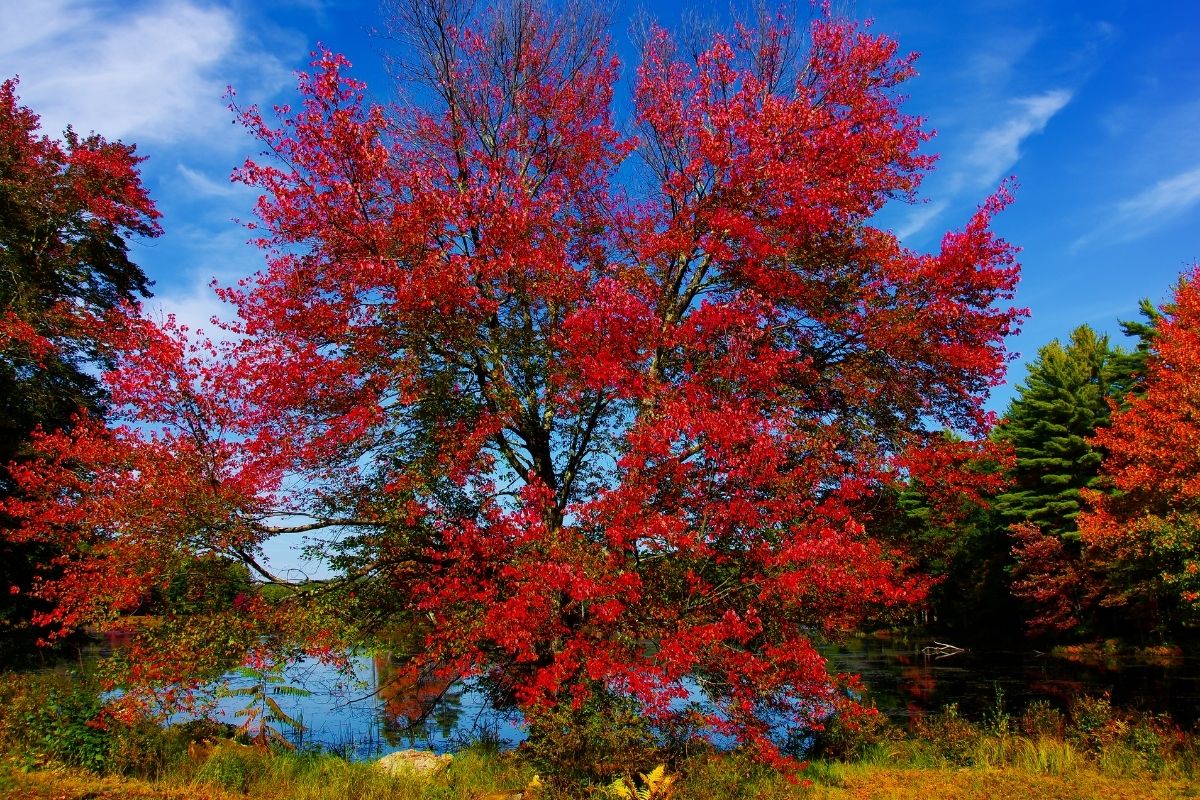
While it is common for leaves to turn red or orange during fall, this does not mean that all trees remain green during the year.
In fact, there are countless specimens that sport red leaves no matter the season.
Red trees can make a beautiful addition to the garden, as they can punctuate the space and brighten up the surrounding land.
So if you want to know more about the different species of red tree available, then you have come to the right place.
In the following article, we have compiled a list of common red trees so that you can learn more about different species and their characteristics.
But be warned, for some of these trees features leaves of all colors, such as red and pink.
So if you want to discover more about these stunning trees, this article has everything you need to get started…
1. Copper Beech (Fagus Sylvatica)
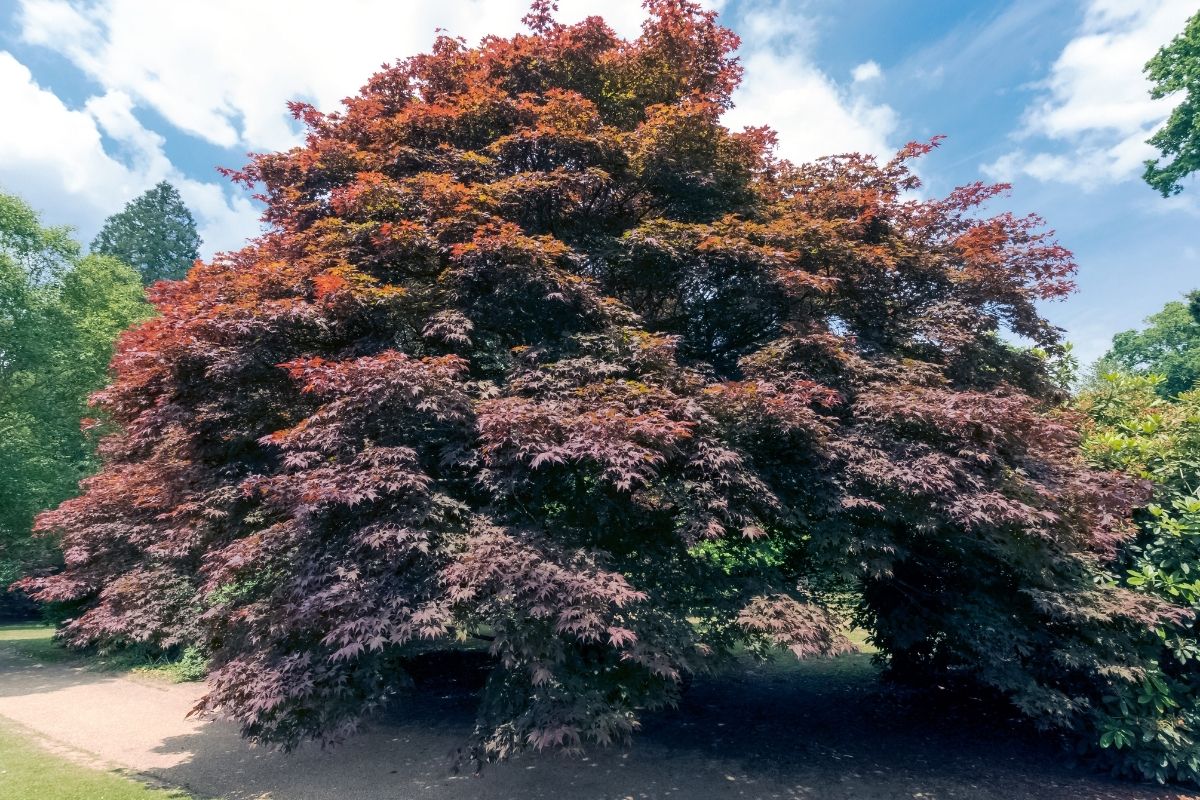
For the first tree on our list, we have chosen one of the most popular species in the world, which is characterized by its vibrant leaves and unique shape.
Otherwise, known as purple beech, this tree is known for its distinctive red to purple leaves, which are tornado-shaped with crisscross patterns.
2. Red Norway Maple (Acer Platanoides)
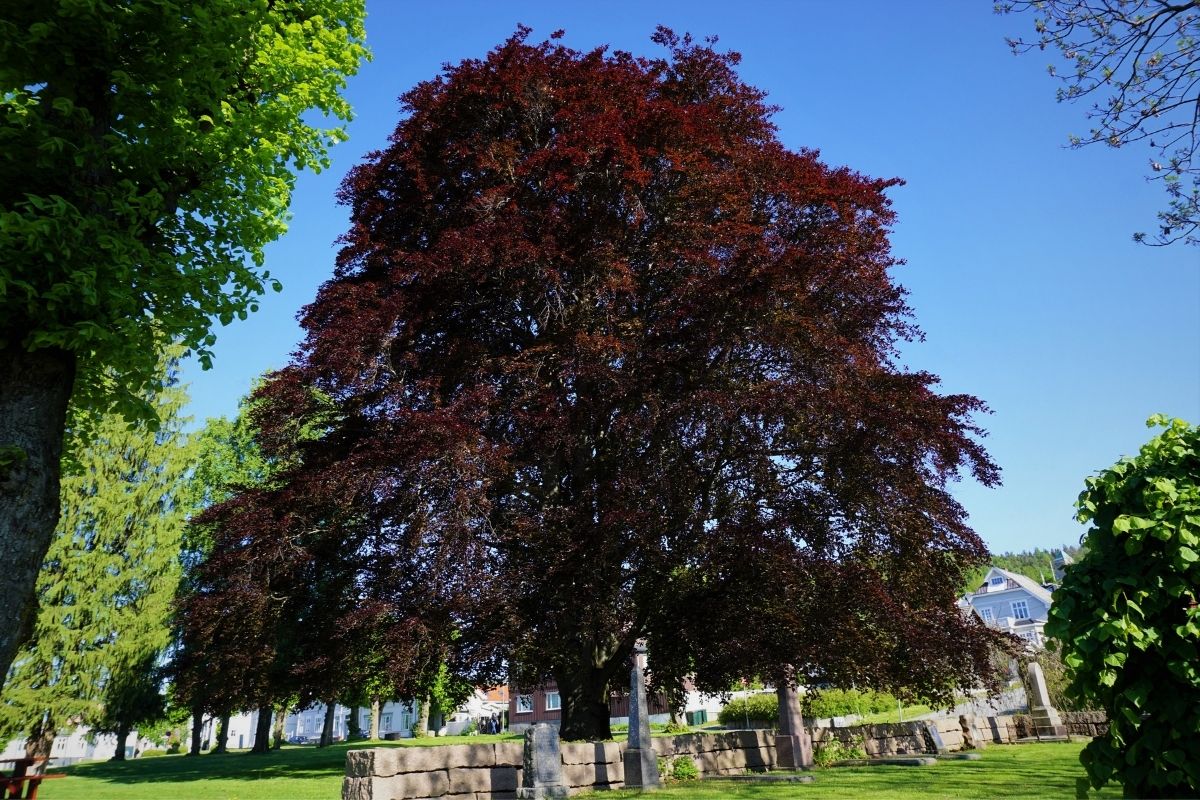
Sometimes known as the crimson king maple, this species of tree can grow up to 30 – 50 feet tall and produces red-purple leaves.
In most cases, this flowering tree can withstand harsh climate conditions such as shade, drought, and coastal weather.
3. Red Silver Flowering Crabapple (Malus Hybrida)
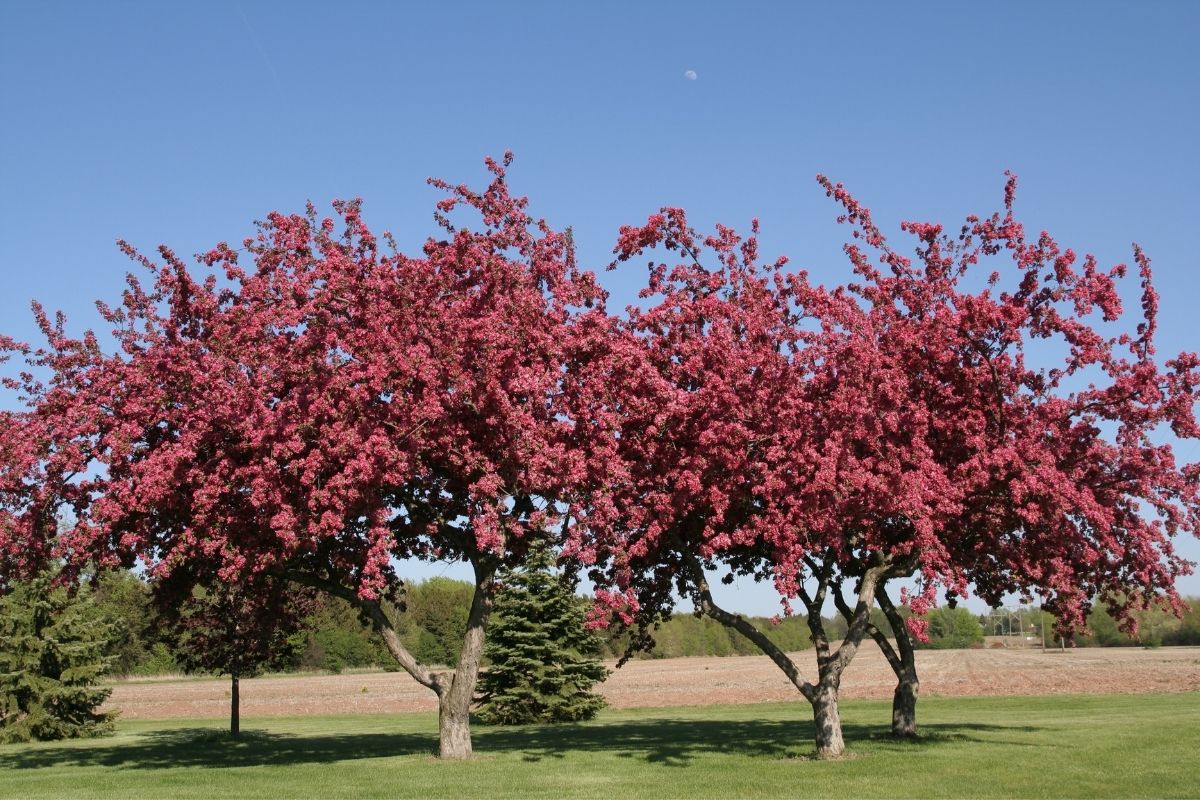
The next species on our list can be identified by its semi-weeping and deciduous appearance, with the tree growing up to 10 – 20 feet wide.
Boasting red or purple leaves, the tree features a dense oval shape and is tolerant of pollution and woodland animals.
4. Purple Leaf Plum Tree (Prunus Cerasifera)
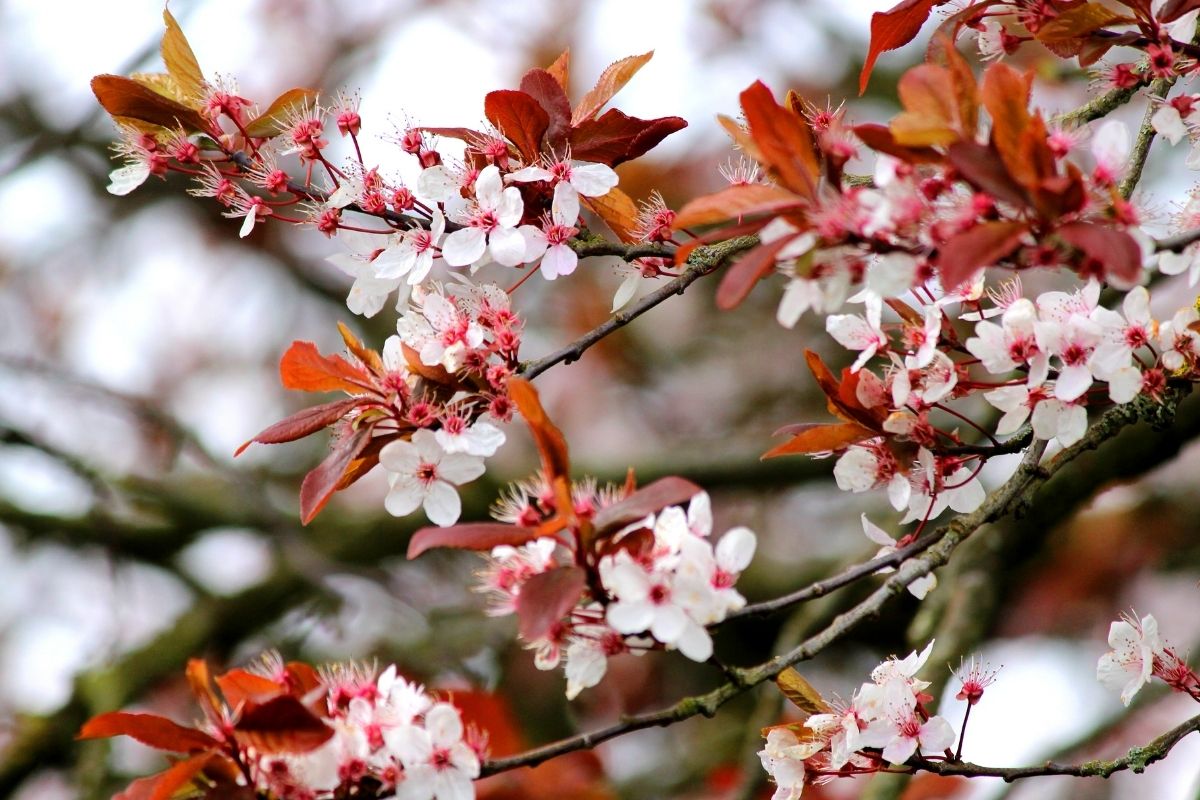
Otherwise, known as a cherry plum tree or flowering plum tree, this species can grow from 15 to 25 feet (ca. 8 m) and makes for a beautiful addition to any garden.
The small tree can be identified by its red-purple leaves and ornamental white blossoms, which bloom during the spring season.
5. Japanese Maple (Acer Palmatum Atropurpureum)
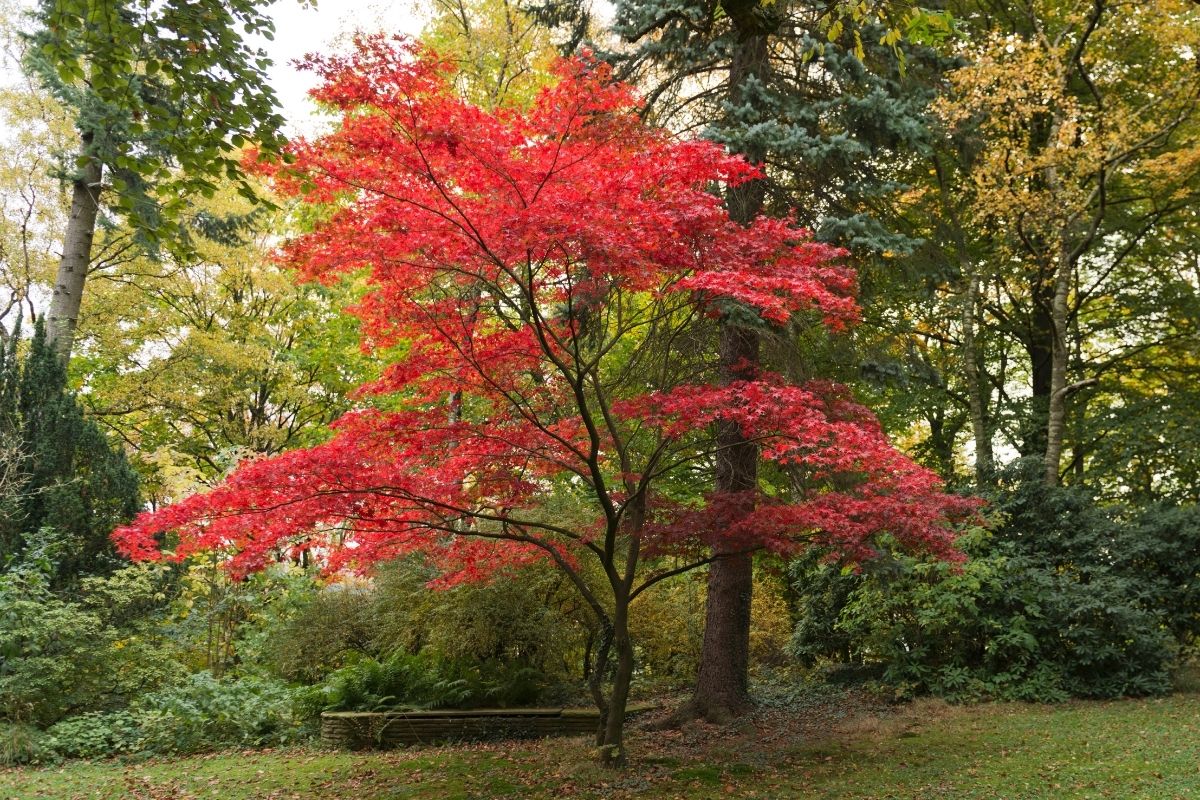
Japanese maple or blood leaf is commonly admired for its beautiful red foliage, which is said to change color according to the climate.
During the spring, the leaves become a rich purple, while in the summer the foliage will turn darker and become scarlet red for the fall.
6. Redbud (Cercis Canadensis)
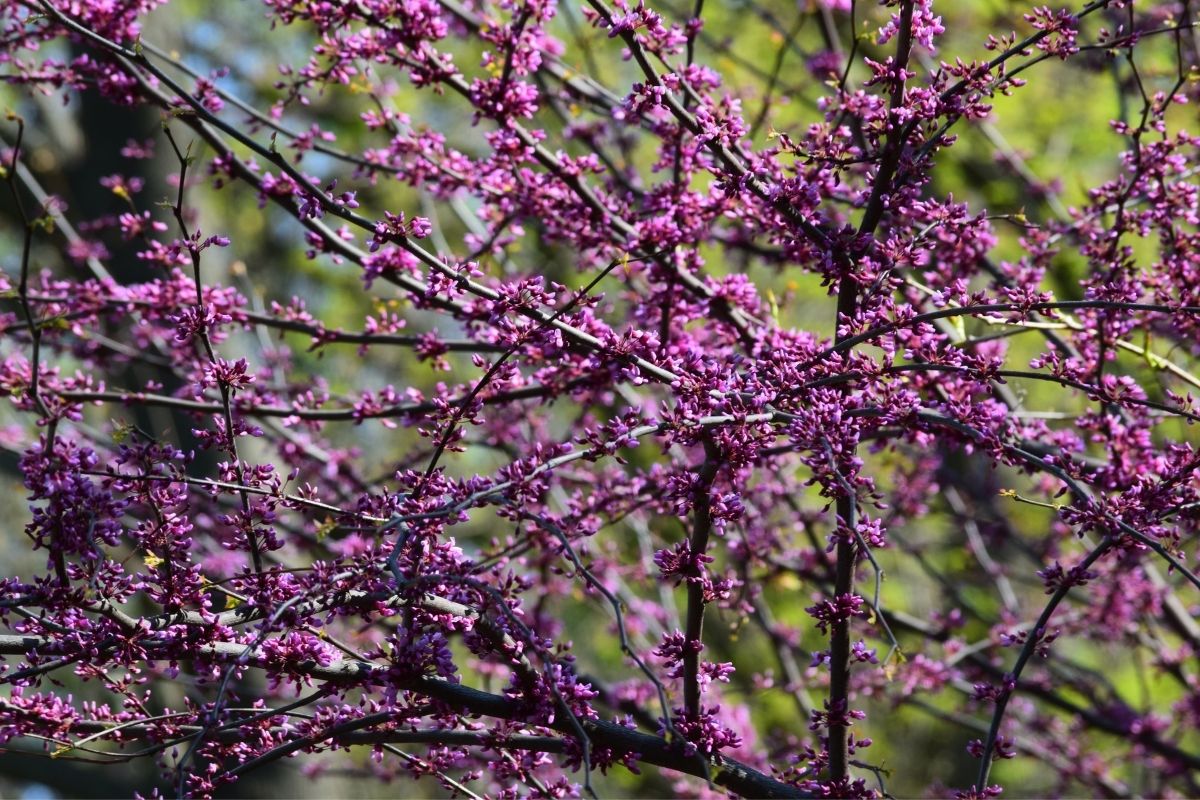
Forest Pansy is a small deciduous tree that has been honored by the Royal Horticultural Society for its stunning appearance.
The species can grow up to 20 – 30 feet tall and is known to produce small heart-shaped leaves that start out orange before gradually fading to a dark maroon.
7. Smokebush (Cotinus Grace)
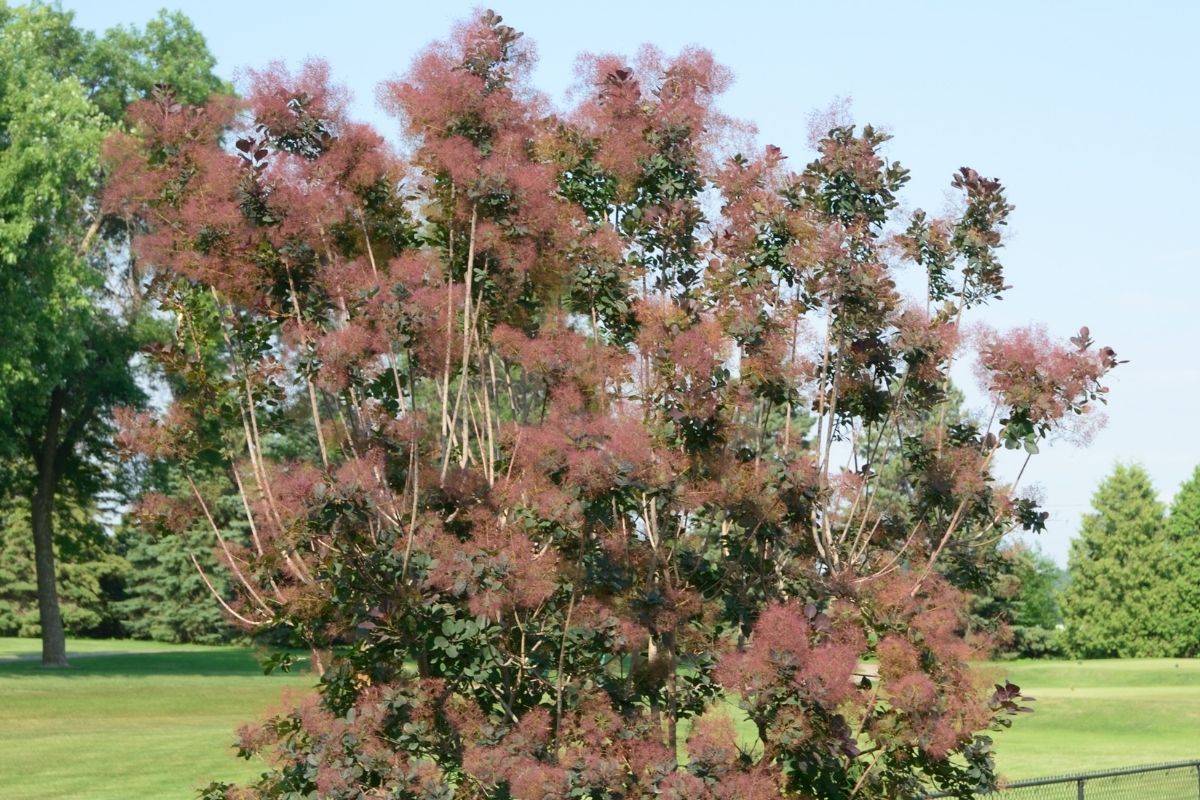
Easily identifiable by its seasonally changing foliage, this vigorous species is a hybrid born from the combination of Cotinus Coggygria and Cotinus Obovatus, otherwise known as the American Smoke Tree.
The tree is said to produce rich red to purple leaves, with the foliage changing color according to the change of the seasons.
8. Laceleaf Japanese Maple (Acer Palmatum Dissectum)
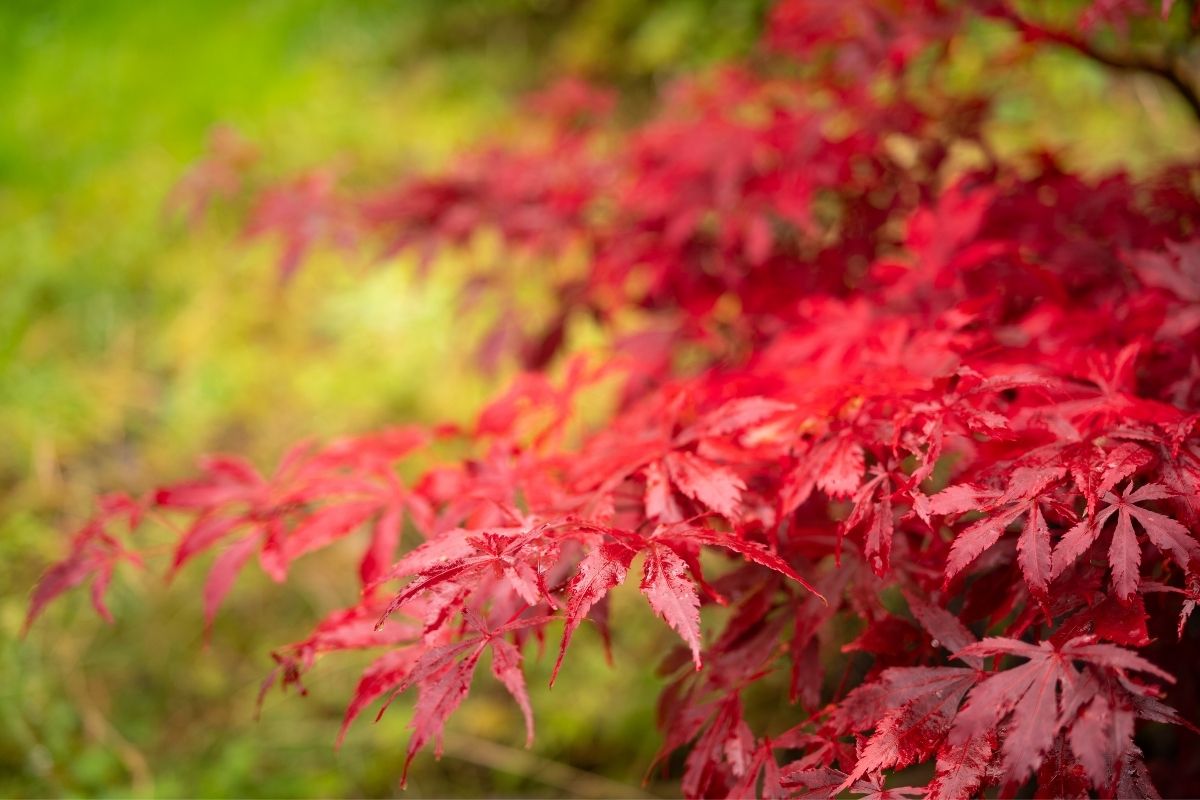
Considered one of the most popular species in the world, this maple tree is known for its distinctive foliage and striking leaf color retention.
The tree can reach up to 10 feet and grow to a spread of 12 feet, making it the ideal tree for sweeping landscapes and tight gardens.
RELATED: 9 Different Types Of Japanese Trees
9. Royal Burgundy (Prunus Serruluta)
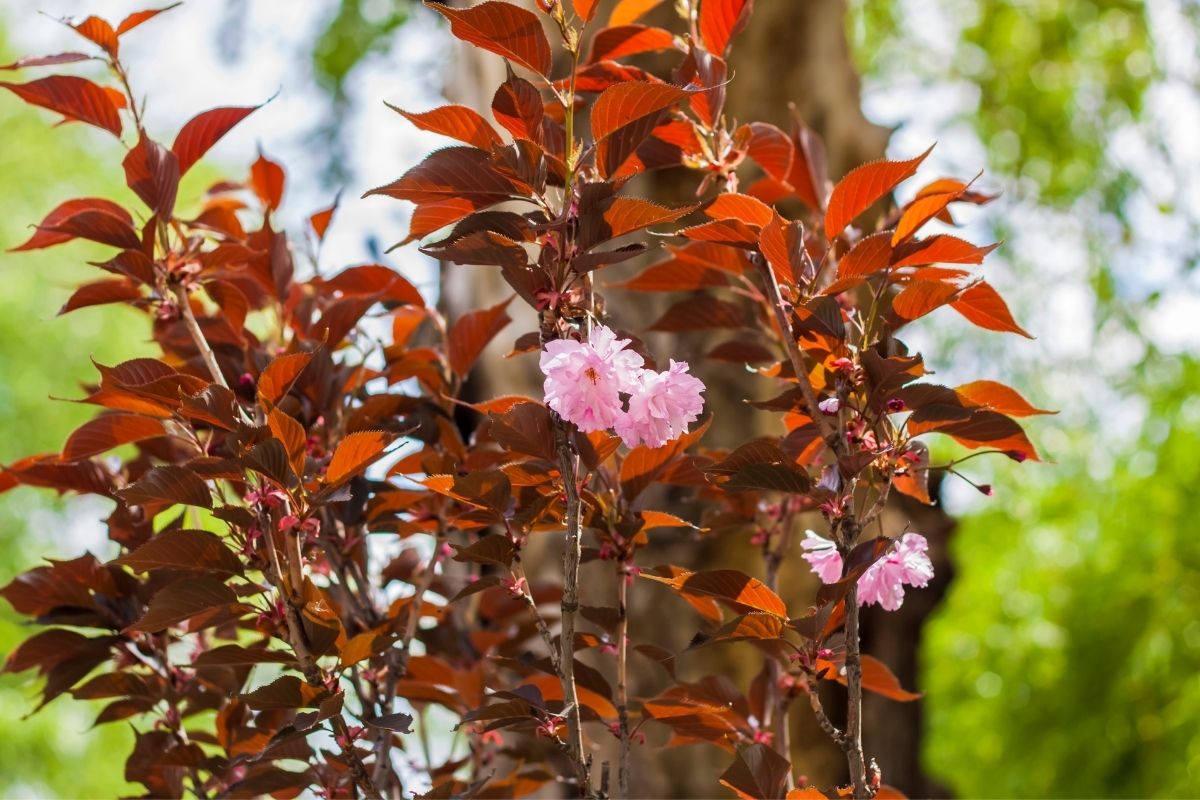
Otherwise known as a royal burgundy flowering cherry, this delicious tree is known for its vase-like appearance and is capable of growing up to 14 – 20 feet with a 12 – 15 foot spread.
It produces vibrant leaves with a red-purple hue and can look particularly attractive when grown in formations with others of the same species.
10. Photinia (Photinia Fraseri)

This festive tree remains a popular choice among amateur gardeners and is sometimes known as a red tip photinia or Christmas berry tree.
In the spring, the species will produce new bright red growth, which contrasts beautifully with its mature emerald green leaves.
11. Weeping Japanese Maples (Acer Palmatum Cascade)
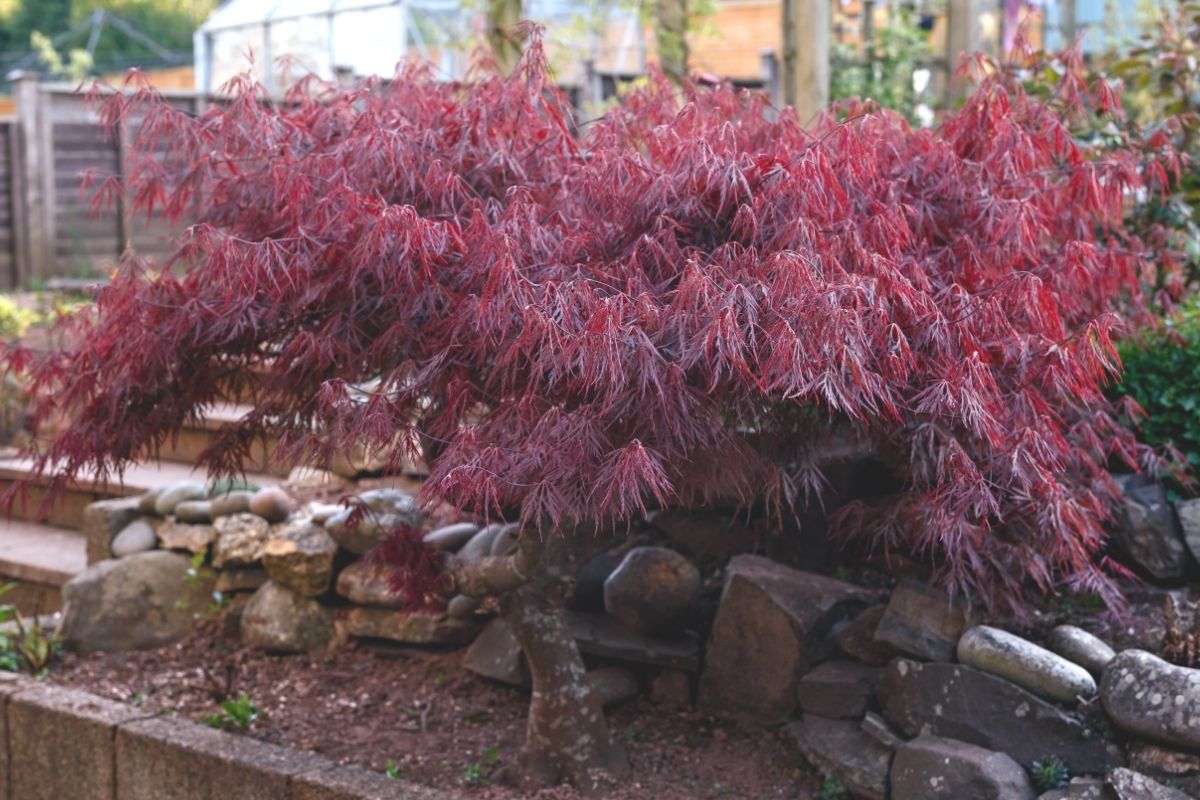
A new cultivar of the iconic Japanese maple, this species is known for its elegant branches and beautiful leaves.
During the spring, the tree will see new growth in the form of orange-red stems, which will eventually fade to a burnished copper.
12. Black Tupelo (Nyssa Sylvatica)
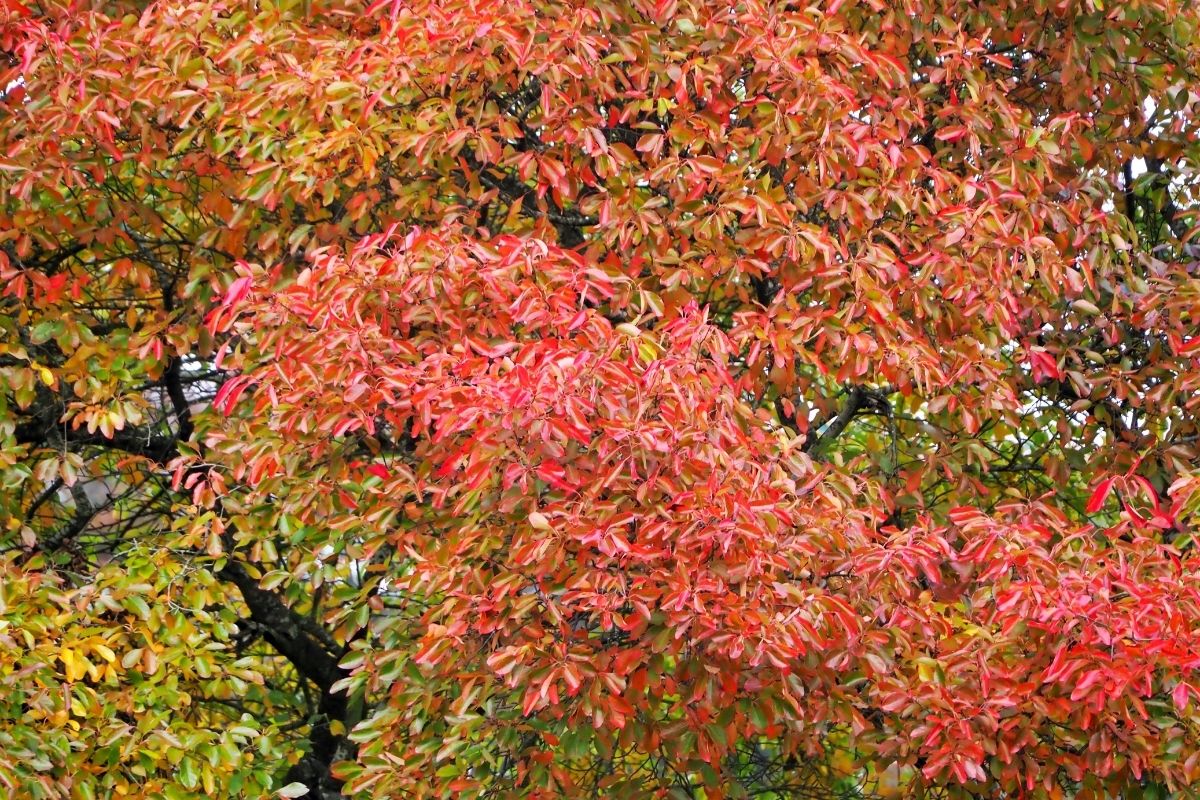
Despite its name, Black Tupelo does not produce any dark colors and is known for its warm and fiery tones.
In the fall, the leaves will take on various shades of red and yellow, which contrast greatly with the green foliage of the summer.
13. October Glory (Acer Rubrum)

If you have been searching for a tree that offers two glorious colors, then look no further than this stunning specimen.
For most of the spring, this species will retain its glossy green leaves before finally transitioning to shades of red and pink for the summer and late fall.
14. Red Maple Tree (Acer Rubrum)
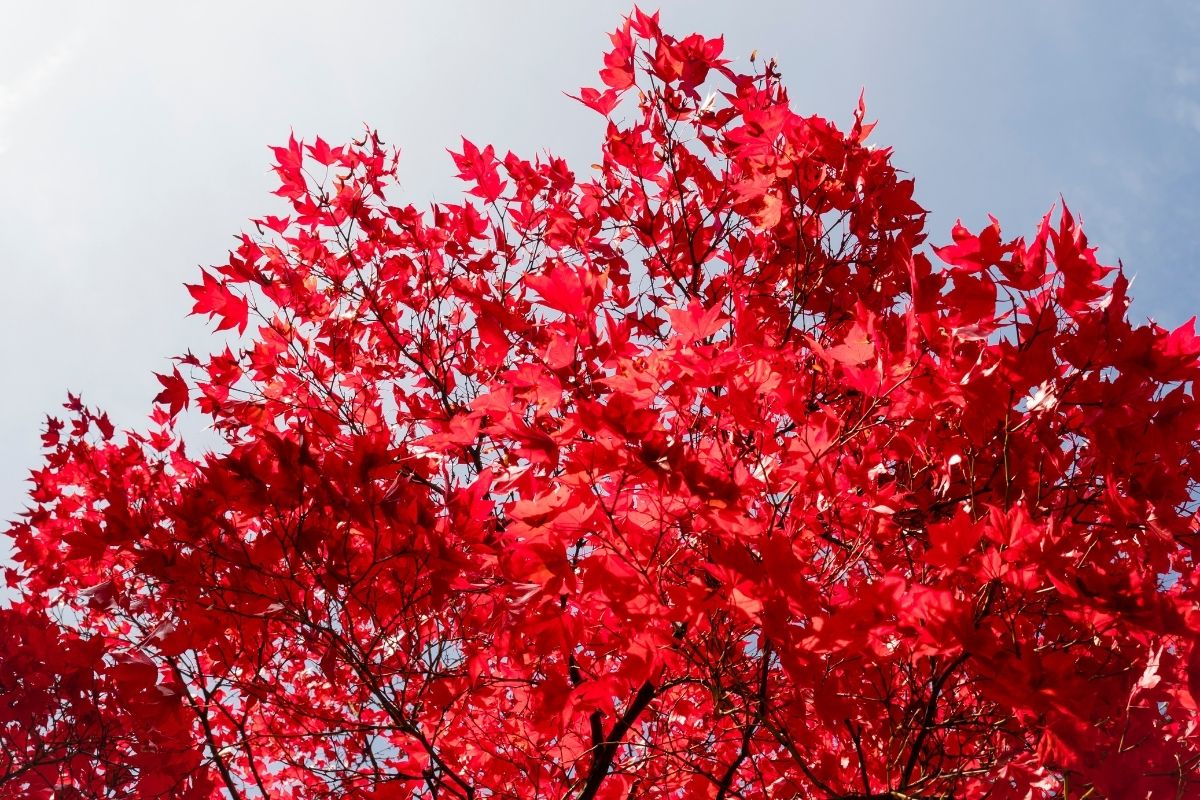
This beautiful tree offers a festive display throughout the season, as it grows buds in the winter and flowers during the spring and summer.
However, it is during the fall that this particular species comes to life, as it will begin to sprout pointed leaves in various shades of vibrant red.
15. Garnet Maple (Acer Palmatum Dissectum)

This lace-leaf maple tree is a native species of central Japan, where it is famous for its red and orange leaves.
While the tree will retain these colors during the growing season, the foliage will eventually fade to a purple-green in the summer before returning to its signature red in the fall.
16. Red Japanese Maple (Acer Palmatum Beni-Maiko)
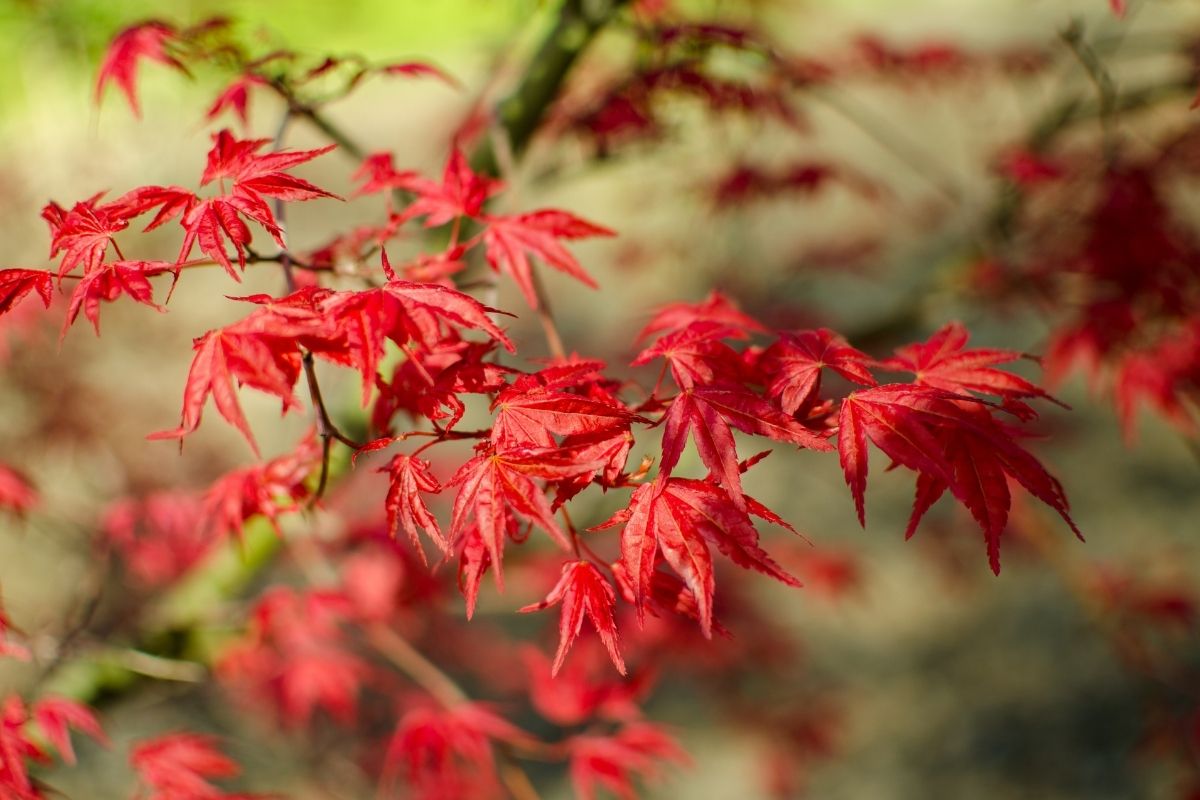
This Japanese dwarf maple tree can only grow up to 4 – 6 feet and will commonly feature branches with 3 – 5 lobed red leaves.
Because of its small stature, Beni-Maiko can be used to make spectacular bonsai and is quite adaptable to container gardens.
17. American Sweetgum (Liquidambar Styraciflua)
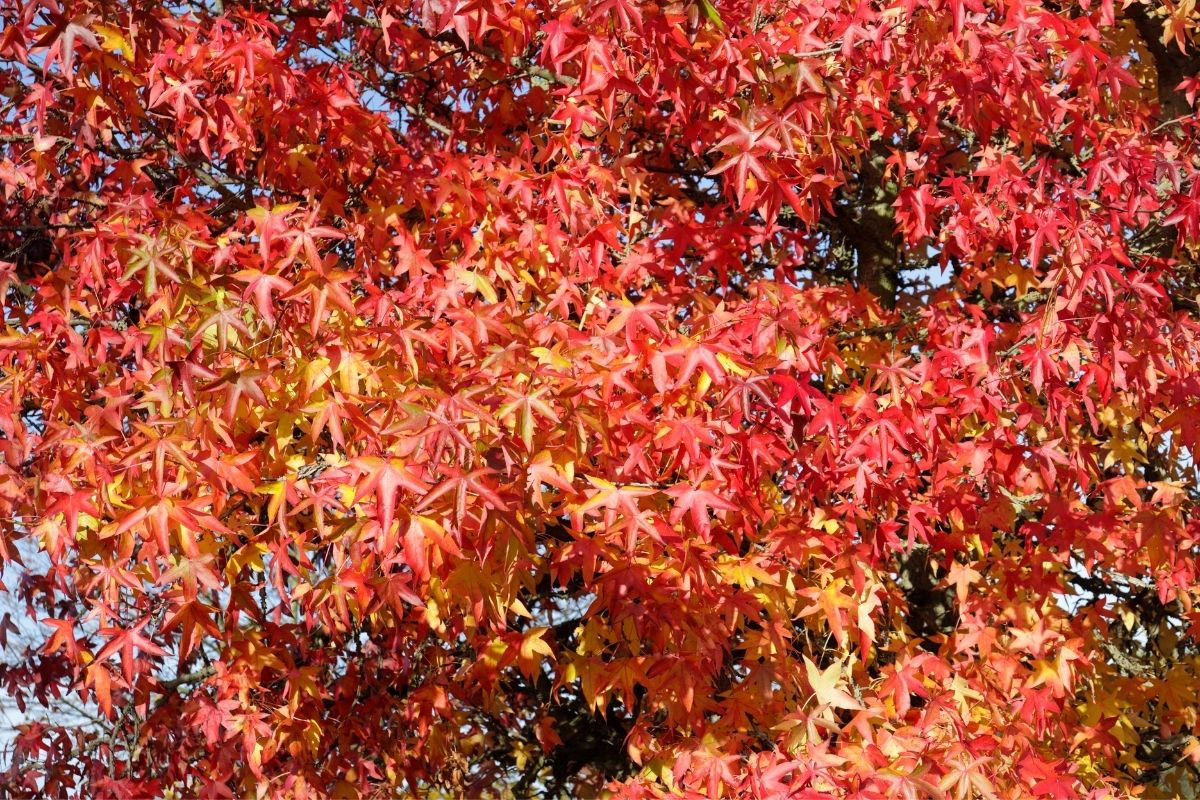
American sweetgum will commonly boast numerous colors during the fall season when the leaves come to life with shades of red, yellow, orange, and purple.
The sweetgum tree can grow to heights of 60 – 80 feet and can be easily identified by its large and shapely leaves.
18. Red-Leaf Euphorbia (Euphorbia Cotinifolia)
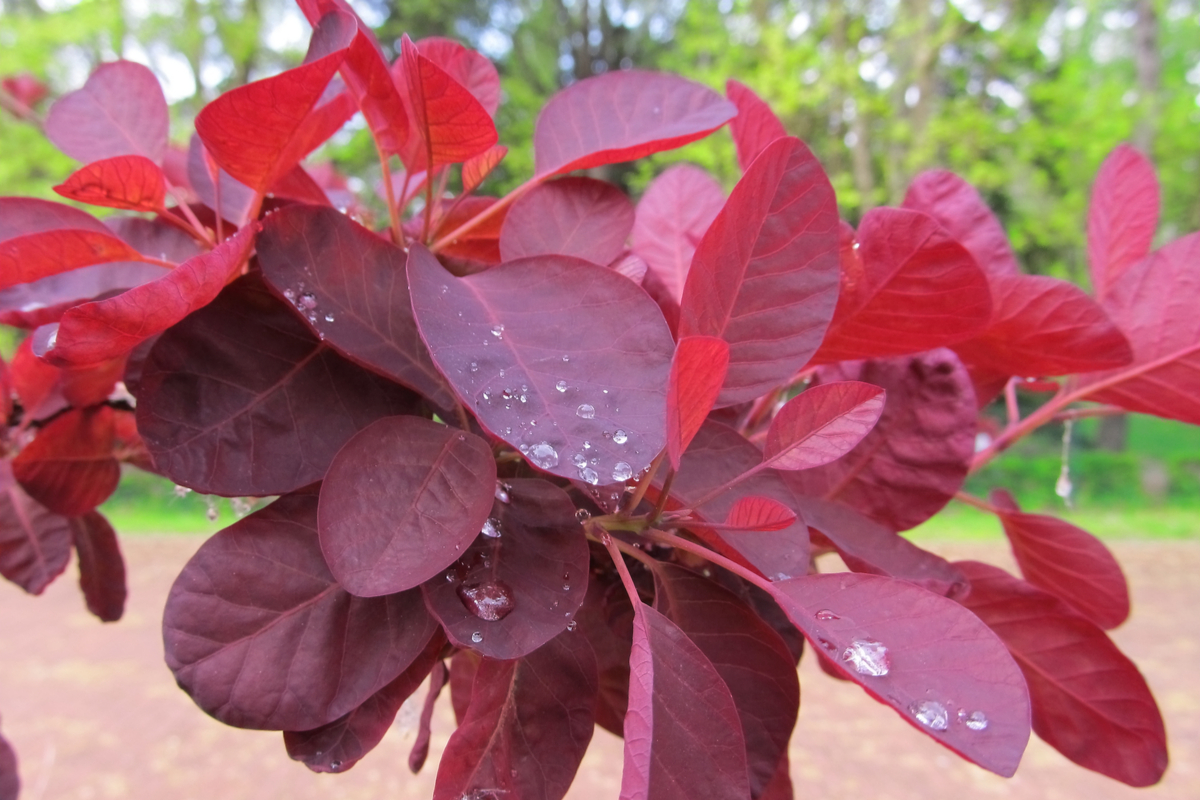
Known for its unique heart-shaped leaves, this tree will take on a deep maroon-red during its maturity, which pairs well with the pink-red stems.
It is capable of reaching up to 8 feet (2.44 m) tall and can be easily cut back to promote more structured growth.
19. Cranberry Hibiscus (Hibiscus Acetosella)
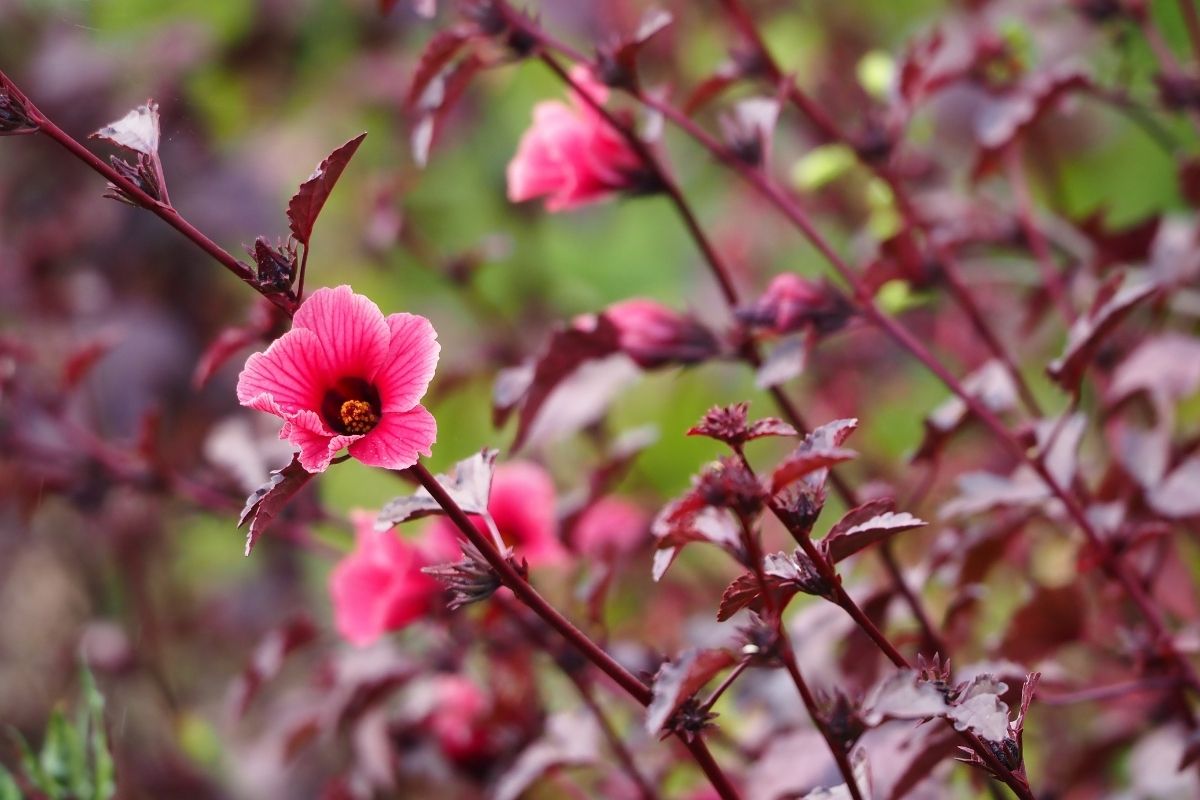
This beautiful shrub will catch your interest with its copper and burgundy foliage, which calls to mind a traditional red maple.
The plant can also grow funnel-shaped flowers in shades of red and yellow, which makes it a popular choice among tropical gardeners.
20. Cristina Ficus (Ficus Cristina)

Featuring dense and rounded leaves, this tree can be purchased in shades of deep maroon and luscious green, with the contrast helping to produce its unique appearance.
Because of its short stature, this particular plant works well when integrated into crowded gardens and can even be used as the foundations of an attractive hedge.
21. Chinese Fringe Flower (Loropetalum Chinense)
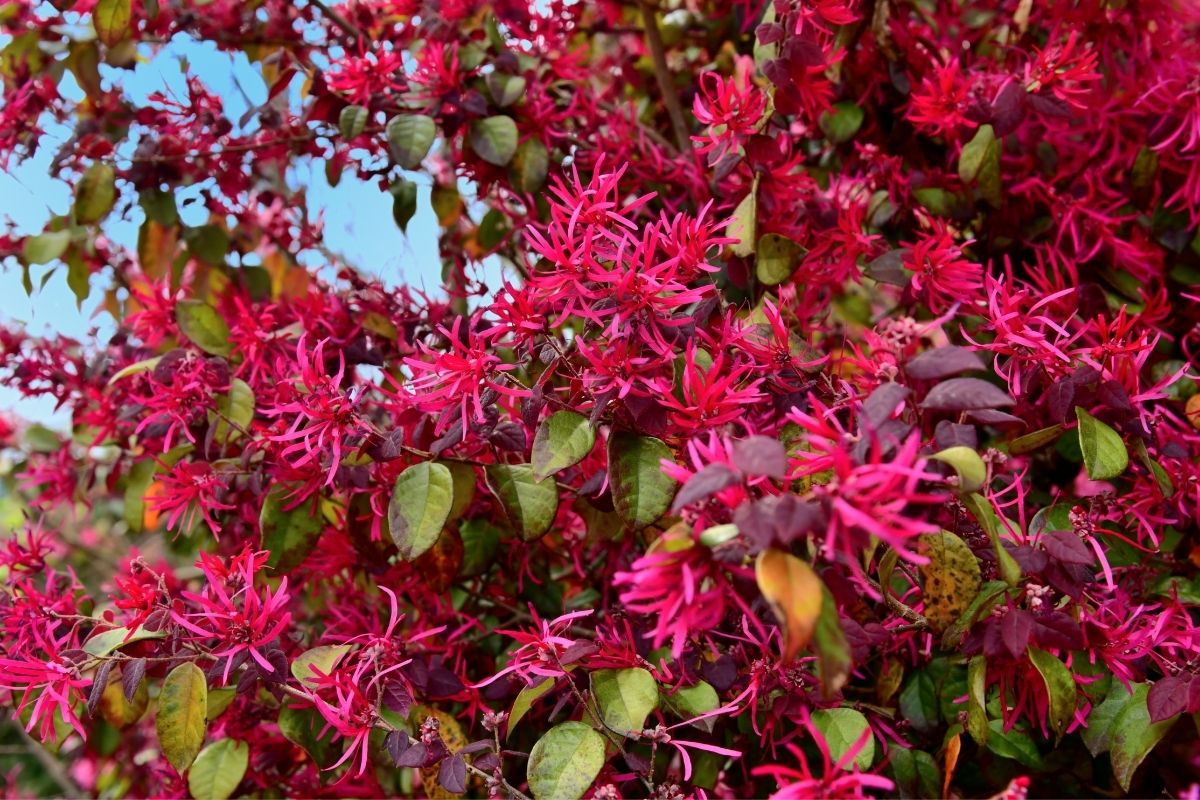
This fast-growing shrub is often characterized by its deep red leaves, which look all the more attractive when it grows its pink and white flowers.
Because of its manageable nature, this plant makes a wonderful addition to any garden and can be grown in a pot for some added effect.
22. Purple Indian Bean Trees (Catalpa Erubescens Purpurea)
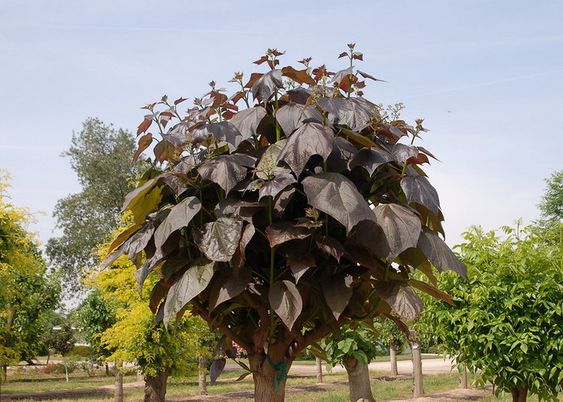
This marvelous species is known for its heart-shaped leaves, which take on a purple-red hue while the tree is still young.
As the species begins to mature, the leaves lose their redness and become a dark green before eventually fading to a rich chocolate purple as they mature.
23. Persian Ironwood Tree (Parrotica Persica)
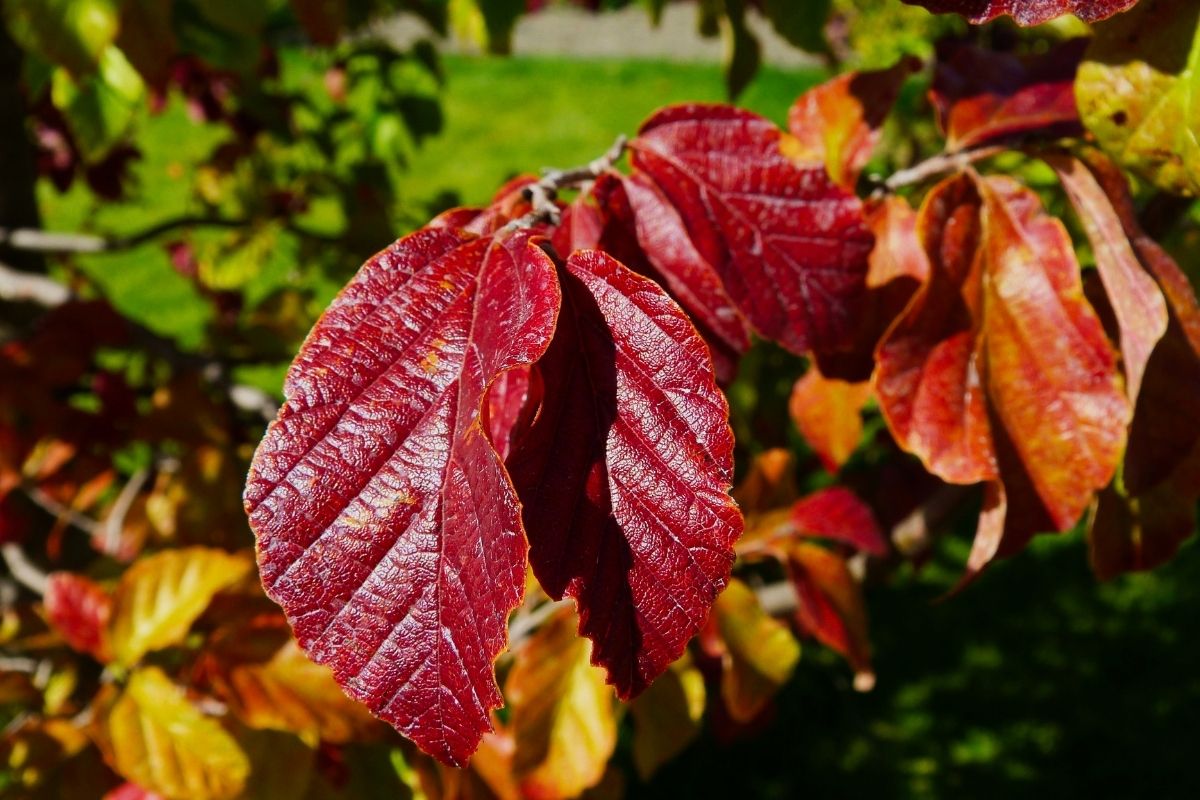
When it comes to color-changing foliage, there’s nothing more striking than the Persian ironwood, which can be identified by its oval-shaped leaves.
When young, the leaves will first emerge as a dark purple before eventually fading to emerald green. It is not until the fall that the leaves will come alive with various shades of red, purple, and yellow.
24. Purple Twisted Hazel Tree (Corylus Avellana)
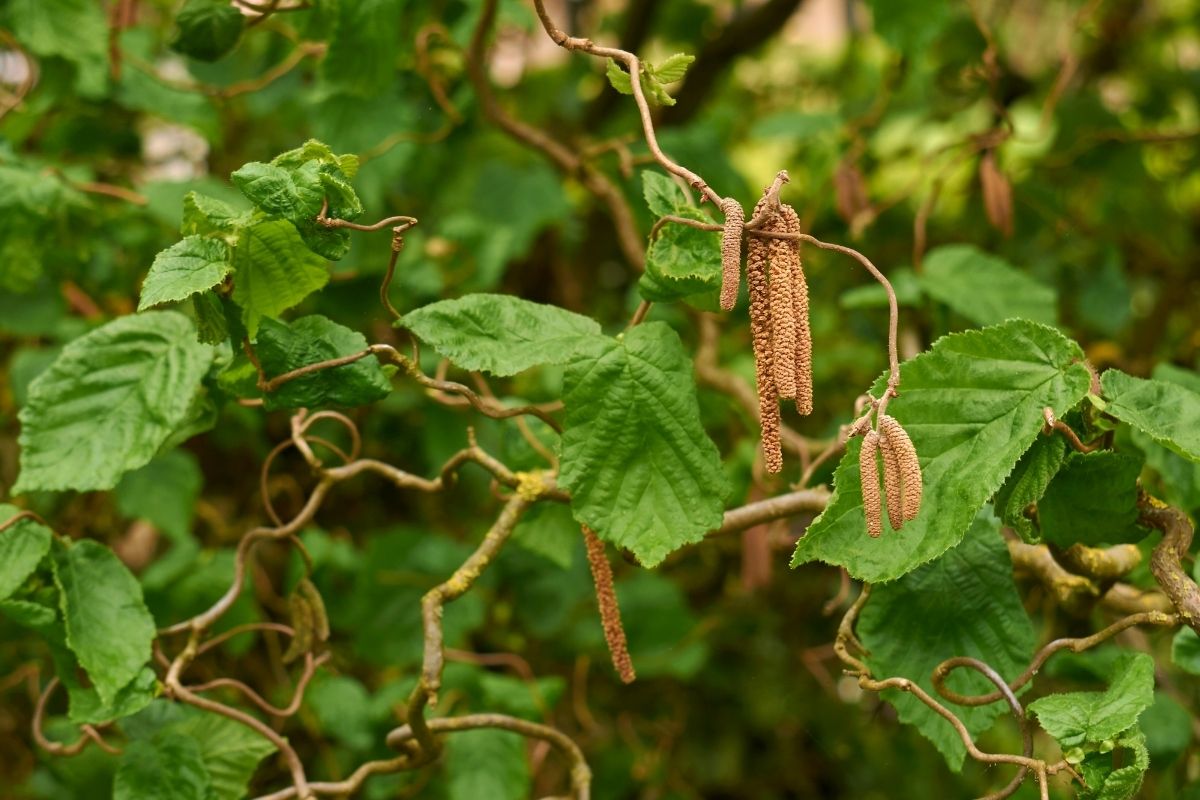
This small ornamental tree is known for its deeply ribbed leaves, which take on a purple-red hue before fading to bronzed green.
During the winter, the twisted branches will also sprout purple-red catkins, which are then followed by the growth of bright red nuts.
25. Purple Weeping Willow (Salix Purpurea Pendula)
This lolly-shaped weeping willow comes with a number of wonderful features, such as its graceful formation and silver-white catkins.
However, the pale green-blue of the leaves will eventually fade as the tree starts to mature, taking on a gray hue with a purple-red tinge.
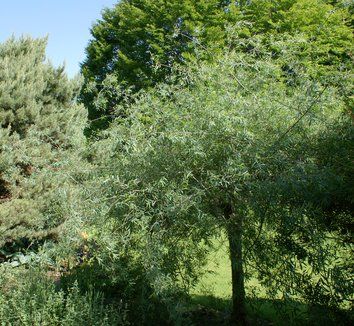
Conclusion
As you can see, there are countless red trees in the world, with each species offering its own characteristics and personality.
Now that you understand the variety of species available, it’s time to consider which one you would want growing in your garden.







